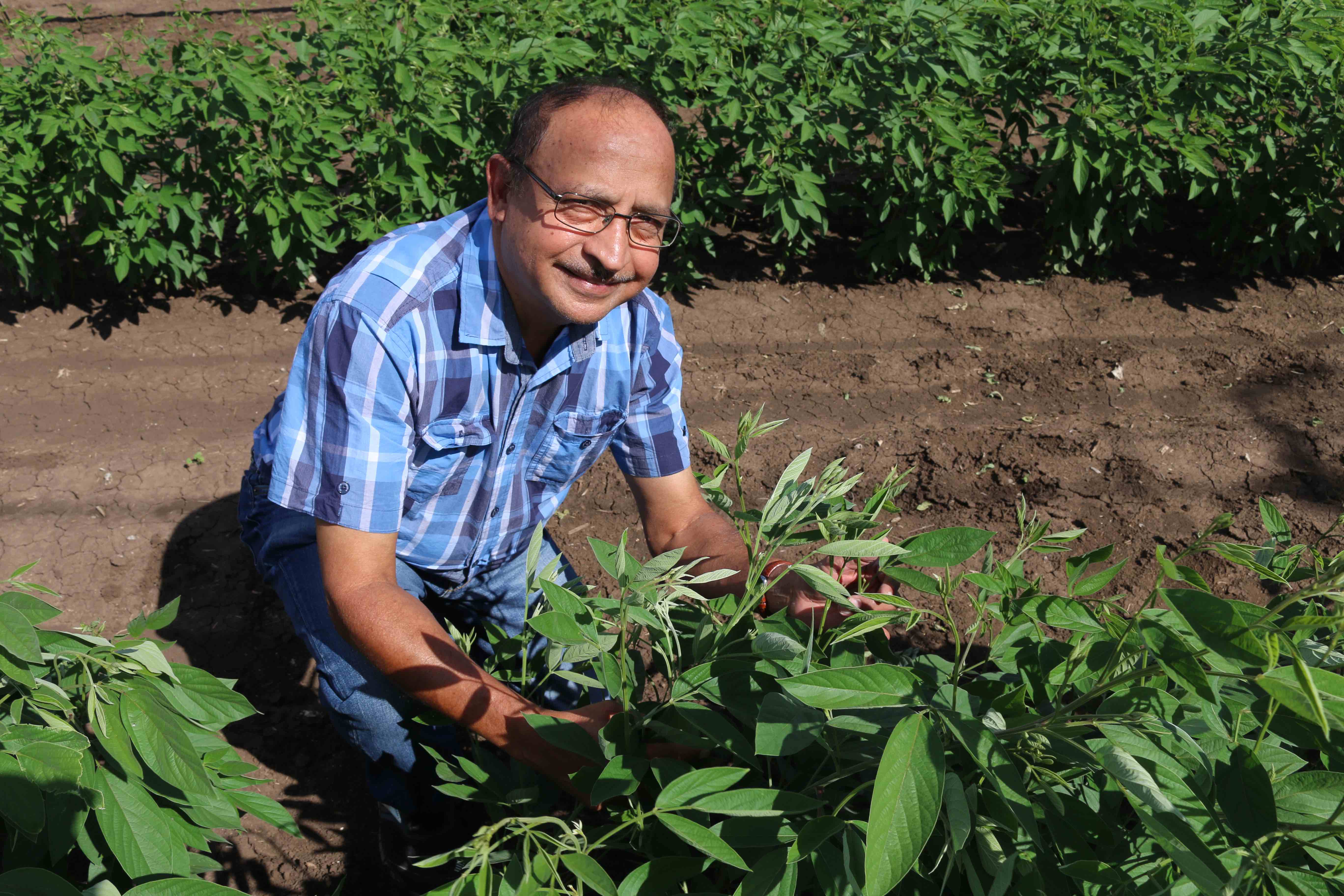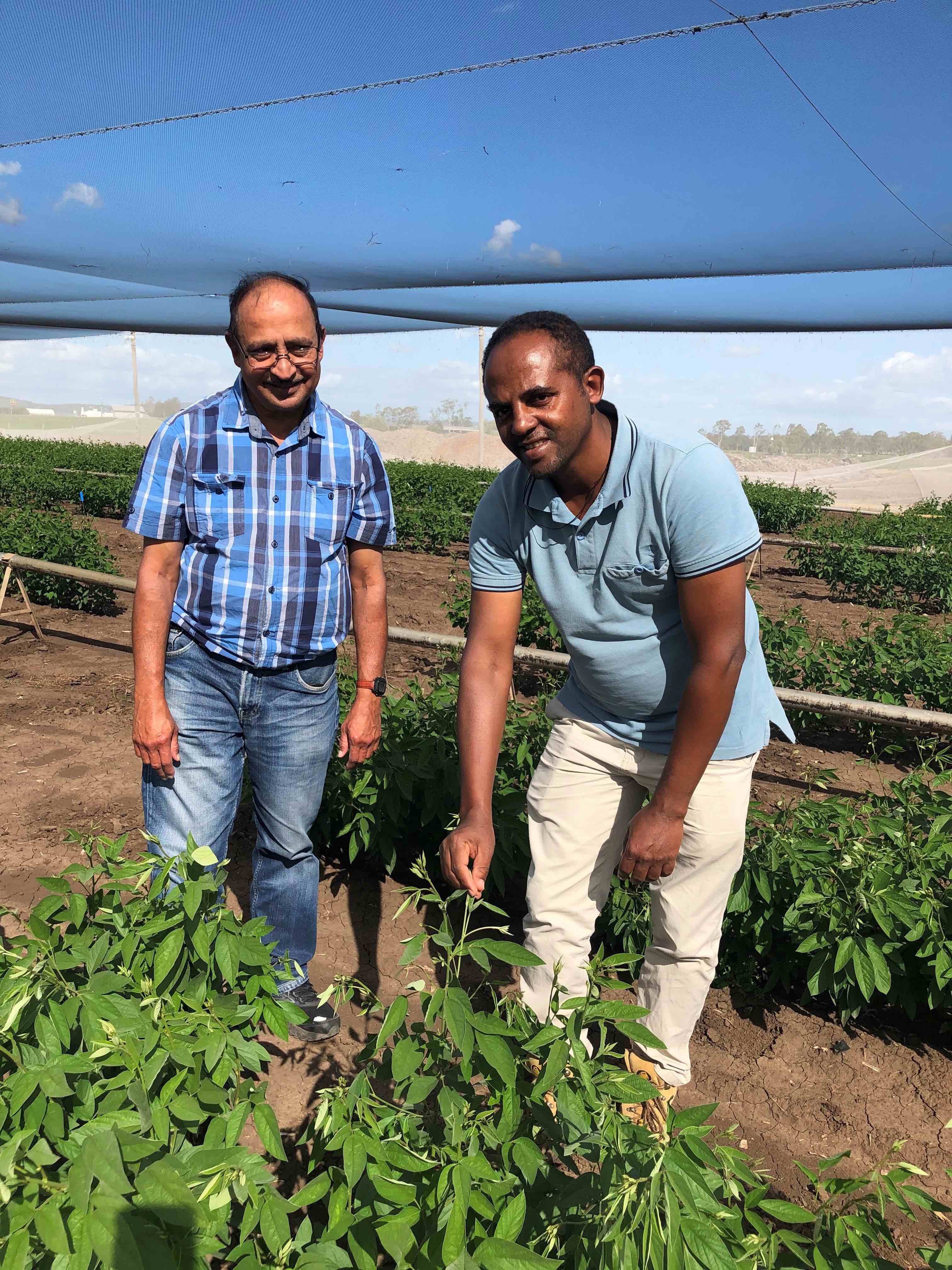A new crop is making its way onto Australian farms as more severe drought causes a rethink of the crops best suited for cultivation in the northern growing region.
The advent of more frequent and severe droughts has hit a critical juncture for agriculture – the point where farmers need to swap out standard staple crops because they are insufficiently drought resilient.
Already in parts of India, popular maize crops have been replaced by drought tolerant sorghum.
A similar adaptation strategy is now underway to help farmers in Queensland and northern New South Wales deal with shortfalls in summer rainfall needed to successfully cultivate mungbeans, soybeans or peanut.
The solution? Introduce the drought-hardy legume, pigeonpea (Cajanus cajan), a protein-rich crop that is vital to the survival of resource-poor farmers in the semiarid tropics of Asia and Africa.
This strategy retains the soil benefits obtained from the inclusion of a legume in a farm’s crop rotation. Concurrently, farmers benefit from a much-needed boost in the cropping options available to them, especially for more marginal seasons.
This timely innovation is the work of Associate Professor RCN Rachaputi, a legume crop physiologist based at the Queensland Alliance for Agriculture and Food Innovation (QAAFI) at The University of Queensland Gatton campus.

In 2019, Associate Professor Rachaputi launched a pigeonpea-breeding program that aims to produce a high yielding variety adapted to Australian growing conditions within about four years.
This work is funded exclusively by an industry partner capable of processing and marketing Australian-grown pigeonpea – an essential pre-requisite for growers to adopt the new crop.
“We performed a feasibility study leading up to this project that found pigeonpea – with its high levels of drought and heat tolerance – is a viable option for the northern grain growing region,” Associate Professor Rachaputi says.
“We found that pigeonpea outperforms mungbeans no matter the environment, a finding that has created a lot of industry interest, including requests for seed from growers.”
Yields possible on Australian farms are likely to be among the best in the world, with four tonnes of pigeonpea per hectare achieved in Queensland under non-limited conditions and at optimal row-spacings.
This compares favourably with the two tonnes per hectare achieved by growth in research plots in the world.
In India, where the crop was originally domesticated more than 3500 years ago, current average yields of pigeonpea are just 0.9 tonnes per hectare, reflecting heavy losses due to a single pest – Helicoverpa pod borer, a moth that can also devastate cotton crops.
Anticipating the adverse impacts of this pest to Australian growers, Professor Rachaputi is taking an ingenious – and frankly unprecedented – approach to provide Australian varieties with in-built genetic resistance.
His approach involves screening Australian native species that are wild relatives to cultivated pigeonpea for the needed pest resistance genes.
“Wild pigeonpea proliferates across the northern section of Australia making this region one of three globally significant centres for pigeonpea biodiversity,” Associate Professor Rachaputi says.

“My team has been characterising this biodiversity and we have identified species that are 100 per cent resistant to Helicoverpa.
“Now my challenge is to work up a way to transfer those wild genes into the cultivated lines.”
The breeding program is also selecting for important productivity characteristics, especially:
- reducing the height of pigeonpea from about three metres to a machine-harvestable 0.5 metres;
- increasing seed size by 30 per cent and changing seed colour to white or red
- earlier maturity by developing varieties that are incentive to changes in day length.
None of these breeding goals are trivial and Associate Professor Rachaputi admits that a three-year timeframe is unrealistic if he was restricted to traditional breeding technology. In that case, 15 years would be more realistic.
Instead, he is using the most advanced breeding technology available anywhere in the world and which constitutes special expertise.
Included is Gatton’s new speed breeding facility, a high-tech glasshouse that uses artificial light to induce plants to flower faster, which makes it possible to grow four generations of pigeonpea in one year.
Additional acceleration is possible by the development of algorithms that can simulate impacts of pigeonpea biodiversity on growth rates, flowering time, yield and impact on yields of Australian growing conditions.
These algorithms form a new module in the highly advanced APSIM plant crop growth model that can simulate years of breeding field trials in months, thereby providing a rapid way to select the highest performing lines and breeding strategies.
“APSIM modelling can account for the complex way that genetics, agronomy and environment interact to affect yields, making this tool highly realistic and predictive for breeding outcomes,” Associate Professor Rachaputi says.
“That means we can accelerate the delivery of a much needed new option for our cropping systems that are in real need for another broadleaf legume. From what I have seen to date, I think the new pigeonpea variety under development will fill that role.”
Contact: Associate Professor RCN Rachaputi, Principal Research Fellow, Centre for Crop Science, Queensland Alliance for Agriculture and Food Innovation, The University of Queensland, Gatton. E. rao.rachaputi@uq.edu.au T. +61 7 535 15093 M. 0427 600 737.
High resolution photos: https://www.dropbox.com/sh/j9k9tssuc10l26w/AADfjiJCLE532EhdWPMHpOfVa?dl=0
For more images and captions contact Carolyn Martin QAAFI Communications, M: 0439 399 886 E: carolyn.martin@uq.edu.au
The Queensland Alliance for Agriculture and Food Innovation is a research institute at The University of Queensland, established with and supported by the Queensland Department of Primary Industries.



